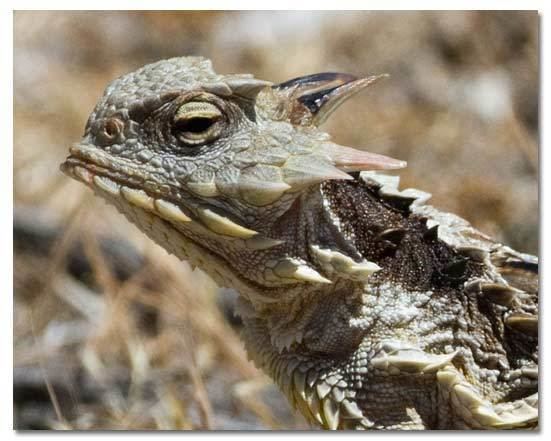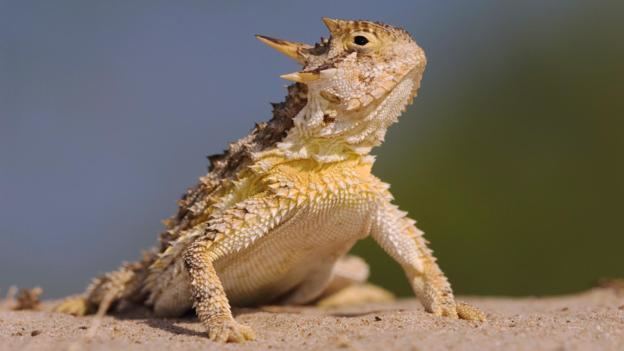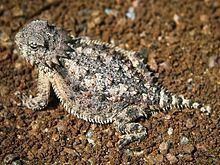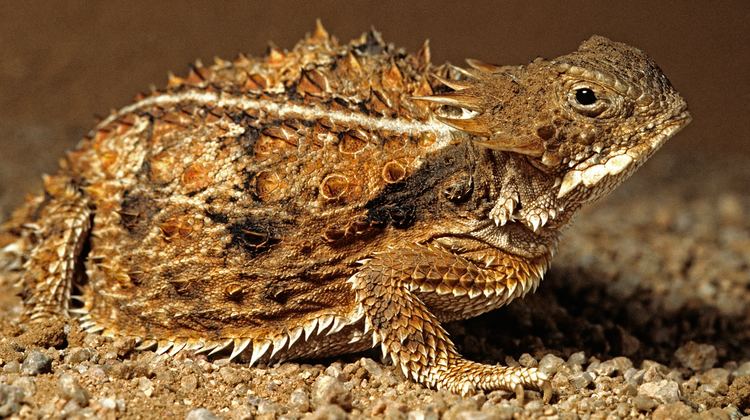Family Phrynosomatidae Order Scaled reptiles Rank Genus | Suborder Iguania Scientific name Phrynosoma Higher classification Phrynosomatinae Phylum Chordata | |
 | ||
Lower classifications Texas horned lizard, Desert horned lizard, Greater short‑horned lizard, Coast horned lizard, Flat‑tail horned lizard | ||
Horned lizards in our backyard
Horned lizards are a genus (Phrynosoma) of lizards which are the type genus of the family Phrynosomatidae. The horned lizard has been affectionately called a "horny toad", or "horned frog", though they are not moist-skinned toads or frogs. The common names come from the lizard's flattened, rounded body and blunt snout, which make it resemble a toad or frog (Phrynosoma means "toad-bodied"), as well as its tendency, in common with larger true frogs and toads, to move sluggishly, making them easy to hand-catch (such slow, undramatic movements may also avoid triggering attacks by predators, discussed later in this article). They are totally adapted to desert areas. The spines on its back and sides are made from modified reptile scales which prevent the water loss through the skin, whereas the horns on the heads are true horns (i.e. they have a bony core). Of 15 species of horned lizards in North America, eight are native to the United States. The largest-bodied and most widely distributed of the US species is the Texas horned lizard.
Contents
- Horned lizards in our backyard
- How to set up mountain horned lizards
- The blood squirting mechanism
- Population decline
- Species and subspecies
- Symbol
- References

Horned lizards use a wide variety of means to avoid predation. Their coloration generally serves as camouflage. When threatened, their first defense is to remain still to avoid detection. If approached too closely, they generally run in short bursts and stop abruptly to confuse the predator's visual acuity. If this fails, they puff up their bodies to cause them to appear more horned and larger, so that they are more difficult to swallow. At least eight species (P. asio, P. cornutum, P. coronatum, P. ditmarsi, P. hernandesi, P. orbiculare, P. solare, and P. taurus) are also able to squirt an aimed stream of blood from the corners of the eyes for a distance of up to 5 feet (1.5 m). They do this by restricting the blood flow leaving the head, thereby increasing blood pressure and rupturing tiny vessels around the eyelids. This not only confuses predators, but also the blood tastes foul to canine and feline predators. It appears to have no effect against predatory birds. Only three closely related species (P. mcallii, P. modestum, and P. platyrhinos) are certainly known to be unable to squirt blood. To avoid being picked up by the head or neck, a horned lizard ducks or elevates its head and orients its cranial horns straight up, or back. If a predator tries to take it by the body, the lizard drives that side of its body down into the ground so the predator cannot easily get its lower jaw underneath.

How to set up mountain horned lizards
The blood-squirting mechanism

While previous thought held that compounds were added to the blood from glands in the ocular sinus cavity, current research has shown that the chemical compounds that make up the defense are already in the circulating blood. It is possible that their diet of large quantities of venomous Harvester Ants could be a factor; however, the origin and structure of the chemicals responsible are still unknown. The blood-squirting mechanism increases survival after contact with canine predators; therefore, it is probable that, while unorthodox, the trait could have provided an evolutionary advantage. Ocular autohemorrhaging has also been documented in other lizards, which suggests blood-squirting could have evolved from a less extreme defense in the ancestral branch of the genus. Recent phylogenic research supports this claim, so it appears as though the species incapable of squirting blood have lost the adaptation for reasons yet unstudied.
Population decline
A University of Texas publication notes that,

Horned lizard populations continue to decline and disappear throughout the southwest despite protective legislation. The species most often noted for declining numbers is the Texas horned lizard which has disappeared from almost half of its geographic range.

Population declines are attributed to loss of habitat, human eradication of the ant populations upon which the lizards prey, displacement of native ant populations by invading fire ants (aided by synergistic effects of native ant eradication), and predation by domestic dogs and cats.
Species and subspecies

Symbol
The genus of horned lizards is the official state reptile of Wyoming.
Texas designated the Texas horned lizard (Phrynosoma cornutum) as the official state reptile in 1993 and the "horned frog" is the mascot of Texas Christian University in Fort Worth, Texas. TCU is the only known athletic team with the "Horned Frog" as a mascot.
